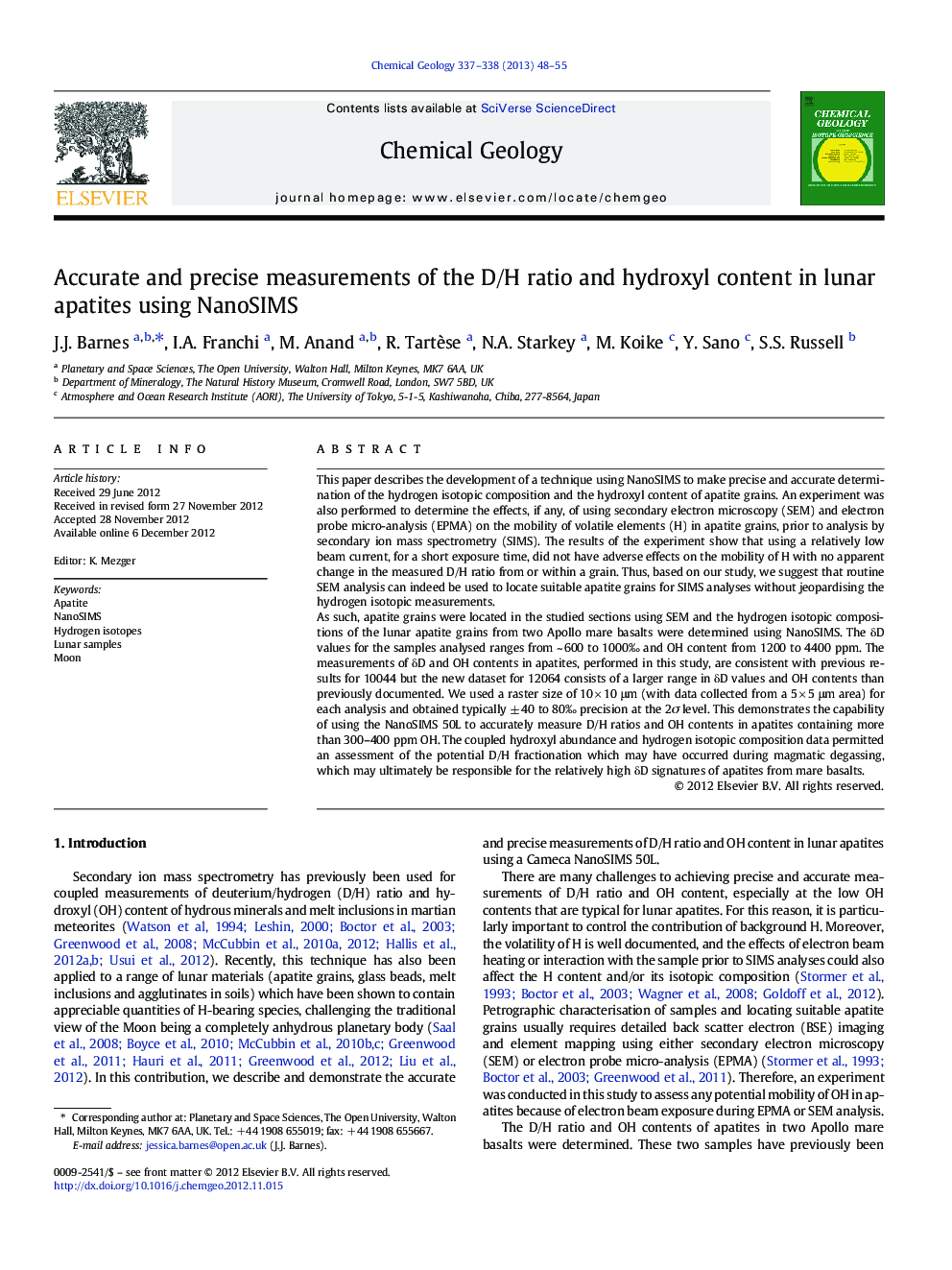| Article ID | Journal | Published Year | Pages | File Type |
|---|---|---|---|---|
| 4699204 | Chemical Geology | 2013 | 8 Pages |
This paper describes the development of a technique using NanoSIMS to make precise and accurate determination of the hydrogen isotopic composition and the hydroxyl content of apatite grains. An experiment was also performed to determine the effects, if any, of using secondary electron microscopy (SEM) and electron probe micro-analysis (EPMA) on the mobility of volatile elements (H) in apatite grains, prior to analysis by secondary ion mass spectrometry (SIMS). The results of the experiment show that using a relatively low beam current, for a short exposure time, did not have adverse effects on the mobility of H with no apparent change in the measured D/H ratio from or within a grain. Thus, based on our study, we suggest that routine SEM analysis can indeed be used to locate suitable apatite grains for SIMS analyses without jeopardising the hydrogen isotopic measurements.As such, apatite grains were located in the studied sections using SEM and the hydrogen isotopic compositions of the lunar apatite grains from two Apollo mare basalts were determined using NanoSIMS. The δD values for the samples analysed ranges from ~ 600 to 1000‰ and OH content from 1200 to 4400 ppm. The measurements of δD and OH contents in apatites, performed in this study, are consistent with previous results for 10044 but the new dataset for 12064 consists of a larger range in δD values and OH contents than previously documented. We used a raster size of 10 × 10 μm (with data collected from a 5 × 5 μm area) for each analysis and obtained typically ± 40 to 80‰ precision at the 2σ level. This demonstrates the capability of using the NanoSIMS 50L to accurately measure D/H ratios and OH contents in apatites containing more than 300–400 ppm OH. The coupled hydroxyl abundance and hydrogen isotopic composition data permitted an assessment of the potential D/H fractionation which may have occurred during magmatic degassing, which may ultimately be responsible for the relatively high δD signatures of apatites from mare basalts.
► NanoSIMS method accurately measures the OH content and D/H ratio of apatite. ► δD values for the samples analysed range from 600 to 1000‰. ► OH content from 1200 to 4400 ppm ► δD signatures of lunar apatite grains studied lie outside terrestrial range. ► Elevated δD values suggest that degassing is probably responsible for D/H fractionation.
